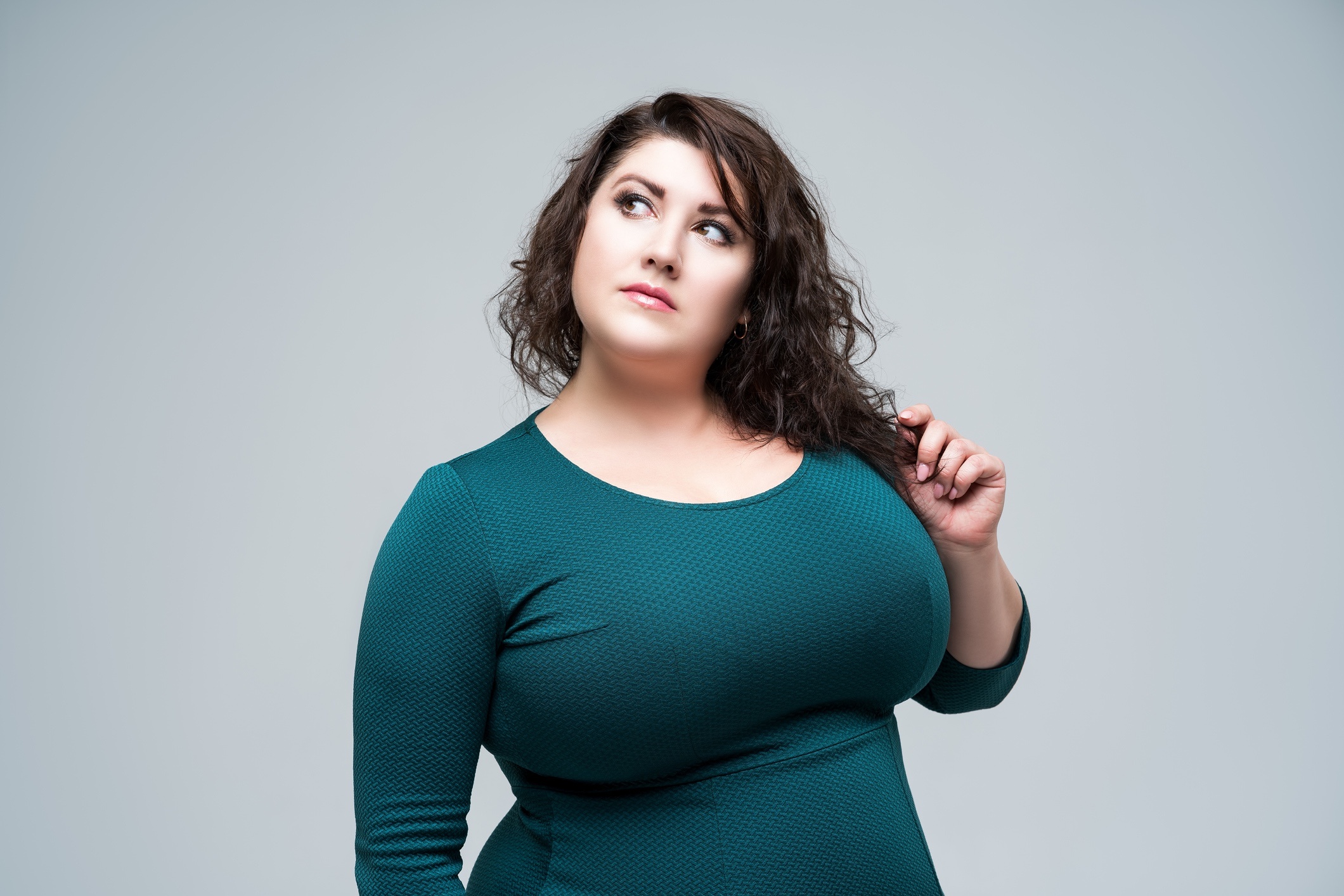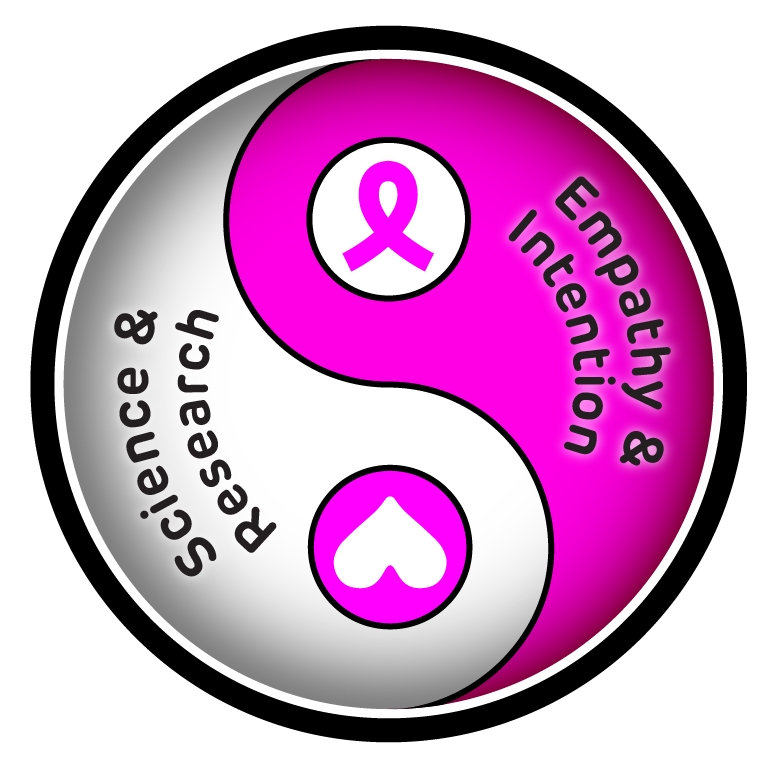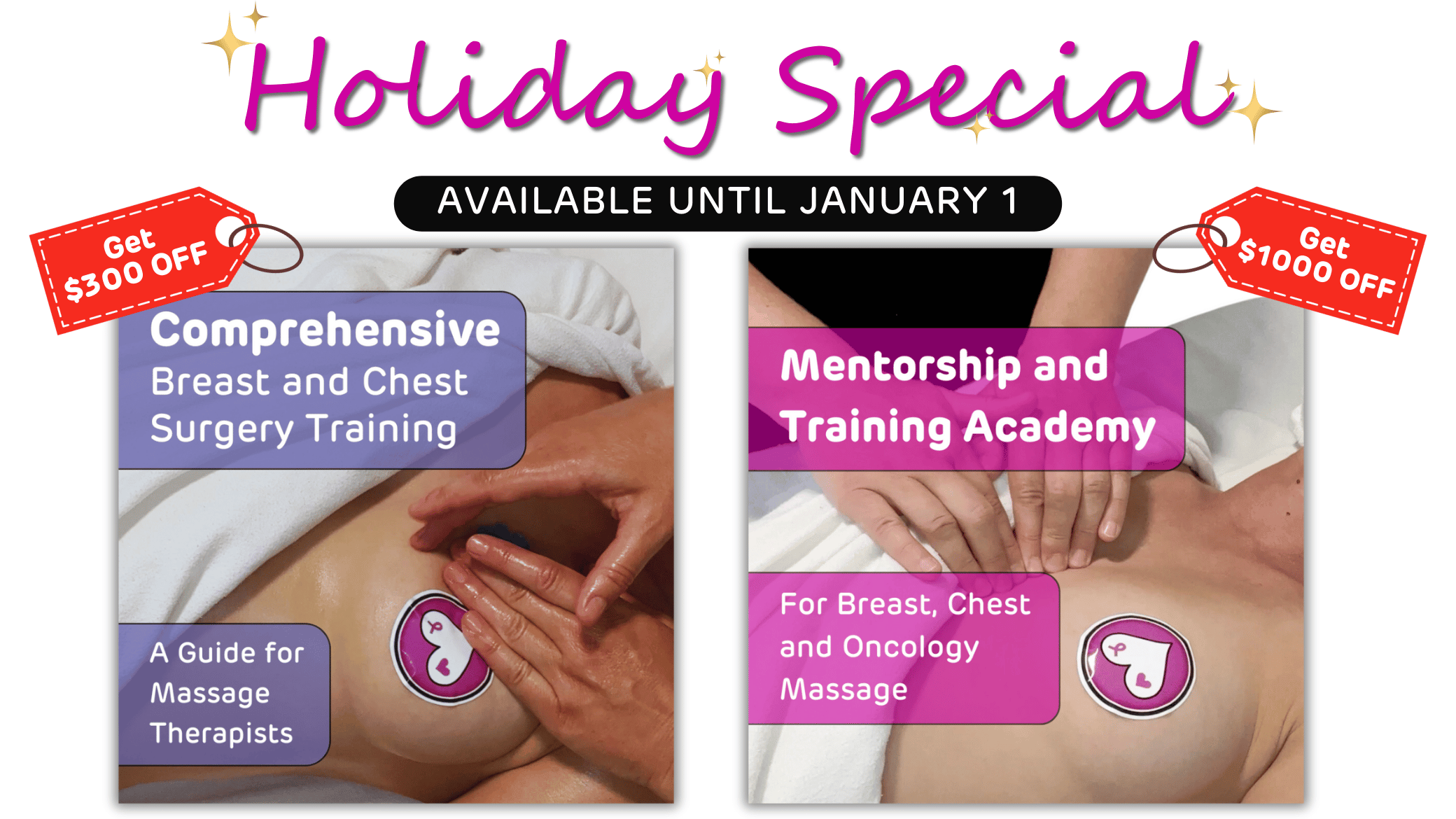Care you can feel no matter how long ago your breast surgery was
Many times we get instructions and we don't know what they mean.
Watch this video to find out how self-massage can help you heal after breast surgery
Research has shown that massage can improve pain, mood and altered body image
It's not always possible to see a professional massage therapist, either due to finance or availability, so knowing how to massage yourself can help you lessen pain, overcome fear, anxiety and depression, as well as help you come to terms with your new shape. Mary Bredin showed the way back in 2001 with her pioneering study on mood, massage and altered body image.


What happens if you don't self-massage?
Not everyone learns to massage themselves and prefer to "leave it to the professionals". While there certainly is merit to having a trained professional in your corner, sometimes they are not available, it's too expensive, your extended health benefits have run out or you might not even have anyone in your area who knows what to do.
Knowing how to massage yourself means you can always get help no matter where you live or what your budget. You're empowered to know your own body, which can also help you come to terms with your new shape more easily - something that can be very challenging after a traumatic experience like breast cancer.
When your surgeon tell you to massage your breasts, this will show you exactly what to do
Self-massage is an act of self-love that helps you manage tight scar tissue and feel like your body is your own
What people are saying
"Better outcomes quickly"
"In just a few sessions, this self-massage is making the world of difference in my pain levels, day to day functioning, and mental wellness". - M. T-R.
"I love myself more"
"I wasn't able to lay hands on myself for about a year after my surgery but since I started self-massaging I'm no longer disliking my body, I can now touch it with love and acceptance" - S.P.
"Scars are not as tight"
"Since I started to massage myself I've noticed my breast scars don't pull as tightly as they used to, and I feel like I can breathe better" - S.P-L
What are you going to learn in Part 3: Post-op Self-massage?
You will learn 7 simple video lessons that will show you exactly how to self-massage after breast surgery.
You will no longer wondering if "digging in here" will do the trick, but instead understand the treatment principles and strokes for safe post-op self-massage.
Here's what you are going to learn:
Lesson 1: Principles of Massage
- Starting with the foundations means you'll be able to safely apply what you're going to learn going forward, with no fear of hurting yourself.
Lesson 2: Normal surgical side effects
- You'll learn what's normal, and what's not, so you can tell the difference between what most people experience after surgery, and when to know if it signifies something more serious like a complication.
Lesson 3: Circulatory Massage
- Here you will learn 3 simple Swedish massage techniques that help promote healthy circulation back to your tissues. This is vital because everything healing comes in the blood, so it's essential to have smooth blood flow for tissue health.
Lesson 4: Lymphatic Drainage
- Very basic hand skills to remove lymphatic build-up can help reduce post-op swelling and fluid retention in your breast and chest, so you can practice preventative care against lymphedema forming.
Lesson 5: Scar Tissue
- Scars are an inevitable part of breast surgery, and knowing how to keep them flexibly and elastic, as well as return to skin tone more quickly, can help you live with them more easily.
Lesson 6: Repair Your Nerves
- Numbness is normal after surgery, and nerves repair slowly, so giving them all the support you can may help re-establish sensation and muscle control more easily.
Lesson 7: Self-massage Routine
- Here's where you learn to put the whole program together into one 20-minute self-massage routine you can carry forward for years to come.
Please note: Must be at minimum 4 weeks+ post-op to start this program.
We are here to support you!
Program Sample
Lesson 2: Principles of Massage
How to massage yourself without leaving behind bruising and tenderness

You don't have to do this alone
Going through a breast cancer diagnosis can be very isolating and terrifying. It can make you feel like you're out of step with the rest of the world. You can have the experience of having other people in your corner though, who understand what you're going through, and that you're not alone in this. Help is here, take advantage of that.

Step-by-step process
At a time when you are learning about a whole new world, feeling under extreme mental and physical duress, having to make huge decisions with very little information, why not make it as easy as possible on yourself and follow a step-by-step method of breast surgery preparation that's been proven to help get you ready?

Approved by surgeons
This video program has been reviewed by surgeons and given their stamp of approval. They say it is full of useful information that is providing hope and direction but that they don't have time to give you themselves. So it's information you can trust, and works in harmony with what your surgeons are wanting you to do.
What people are saying
"It's my "me" time"
"Before learning to self-massage I didn't used to take much time for myself, but now I have learned how calming it is to have my own space where I take care of myself." - R.W.
"Surgeon suggested it"
"My surgeon recommended I get this program and I'm so glad she did, as it's helped me understand how to safely massage myself after surgery" - G.L.
"Greater comfort"
"After finishing this program I kept up with the massage because I found it gave me a greater level of comfort in my body and mind than I had experienced before." - S.N.

Human-centric care backed by science
Our "MG Approach" to breast care stands firm in balancing the "art & science" of massage therapy and yoga


